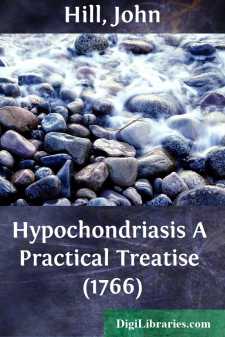Categories
- Antiques & Collectibles 13
- Architecture 36
- Art 48
- Bibles 22
- Biography & Autobiography 813
- Body, Mind & Spirit 142
- Business & Economics 28
- Children's Books 17
- Children's Fiction 14
- Computers 4
- Cooking 94
- Crafts & Hobbies 4
- Drama 346
- Education 46
- Family & Relationships 57
- Fiction 11829
- Games 19
- Gardening 17
- Health & Fitness 34
- History 1377
- House & Home 1
- Humor 147
- Juvenile Fiction 1873
- Juvenile Nonfiction 202
- Language Arts & Disciplines 88
- Law 16
- Literary Collections 686
- Literary Criticism 179
- Mathematics 13
- Medical 41
- Music 40
- Nature 179
- Non-Classifiable 1768
- Performing Arts 7
- Periodicals 1453
- Philosophy 64
- Photography 2
- Poetry 896
- Political Science 203
- Psychology 42
- Reference 154
- Religion 513
- Science 126
- Self-Help 84
- Social Science 81
- Sports & Recreation 34
- Study Aids 3
- Technology & Engineering 59
- Transportation 23
- Travel 463
- True Crime 29
Hypochondriasis A Practical Treatise (1766)
by: John Hill
Categories:
Description:
Excerpt
INTRODUCTION
"When I first dabbled in this art, the old distemper call'd Melancholy was exchang'd for Vapours, and afterwards for the Hypp, and at last took up the now current appellation of the Spleen, which it still retains, tho' a learned doctor of the west, in a little tract he hath written, divides the Spleen and Vapours, not only into the Hypp, the Hyppos, and the Hyppocons; but subdivides these divisions into the Markambles, the Moonpalls, the Strong-Fiacs, and the Hockogrokles."
Nicholas Robinson, A New System of the Spleen, Vapours, and Hypochondriack Melancholy (London, 1729)
Treatises on hypochondriasis—the seventeenth-century medical term for a wide range of nervous diseases—were old when "Sir" John Hill, the eccentric English scientist, physician, apothecary, and hack writer, published his Hypochondriasis in 1766.
For at least a century and a half medical writers as well as lay authors had been writing literature of all types (treatises, pamphlets, poems, sermons, epigrams) on this most fashionable of English maladies under the variant names of "melancholy," "the spleen," "black melancholy," "hysteria," "nervous debility," "the hyp." Despite the plethora ofmateria scriptaon the subject it makes sense to reprint Hill'sHypochondriasis, because it is indeed a "practical treatise" and because it offers the modern student of neoclassical literature a clear summary of the best thoughts that had been put forth on the subject, as well as an explanation of the causes, symptoms, and cures of this commonplace malady.No reader of seventeenth- and eighteenth-century English literature needs to be reminded of the interest of writers of the period in the condition—"disease" is too confining a term—hypochondriasis. Their concern is apparent in both the poetry and prose of two centuries. From Robert Burton's Brobdingnagian exposition in The Anatomy of Melancholy (1621) to Tobias Smollett's depiction of the misanthropic and ailing Matthew Bramble in Humphry Clinker (1771), and, of course, well into the nineteenth century, afflicted heroes and weeping heroines populate the pages of England's literature. There is scarcely a decade in the period 1600-1800 that does not contribute to the literature of melancholy; so considerable in number are the works that could be placed under this heading that it actually makes sense to speak of the "literature of melancholy." A kaleidoscopic survey of this literature (exclusive of treatises written on the subject) would include mention of Milton's "Il Penseroso" and "L'Allegro," the meditative Puritan and nervous Anglican thinkers of the Restoration (many of whose narrators, such as Richard Baxter, author of the Reliquiae Baxterianae, are afflicted), Swift's "School of Spleen" in A Tale of a Tub, Pope's hysterical Belinda in the "Cave of Spleen," the melancholic "I" of Samuel Richardson's correspondence, Gray's leucocholy, the psychosomatically ailing characters of The Vicar of Wakefield and Tristram Shandy, Boswell's Hypochondriack Papers (1777-1783) contributed to the London Magazine, and such "sensible" and "sensitive" women as Mrs....


